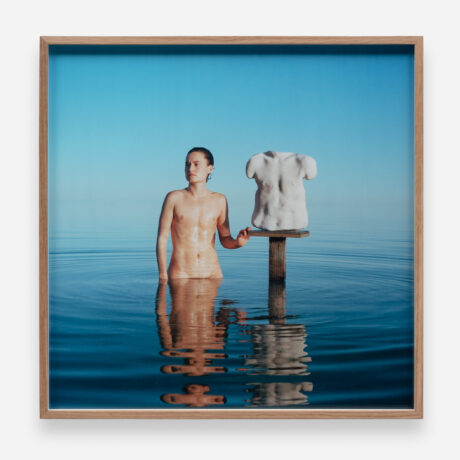London- GUTS Gallery is nestled in the heart of Hackney, where it neighbours a motorbike repair shop, a railway track and an off-licence. ‘GUTS’ is an acronym for “Grafting Under Tory State”, an appropriate slogan for the gallery, which has taken repeated aim at the inequalities of the art world since its inception in 2021. The gallery’s founder, Ellie Pennick, is a self-described queer, working-class Northerner who has cultivated a space now synonymous with accessibility, transparency and verve. In this context, GUTS Gallery’s latest show, Saints and Sinners, is electric, charged with the reality of meaningful LGBTQIA+ representation.

The show includes the work of Ivie Bartlett, whose photography captures the community of black trans people who raised her. The world that Bartlett’s photography exposes is a joyful one, where scantily clad individuals flex down strip poles and vogue across catwalks to the reverence of an onlooking crowd. Bartlett’s photographs are taken using 120mm and 35mm film, and their grainy quality is reminiscent of the photography that emerged from the ballroom scenes of the 80s and 90s, a pivotal era in the history of queer safe spaces. Today, LGBTQIA+ safe spaces are being closed at an increasingly alarming rate. It’s estimated that in the last decade, 60% of London’s queer spaces have been closed. A trend that has only accelerated since the pandemic. Bartlett’s photographs are a necessary love letter to these same spaces and, implicitly, an instruction to sustain the communities that need them.
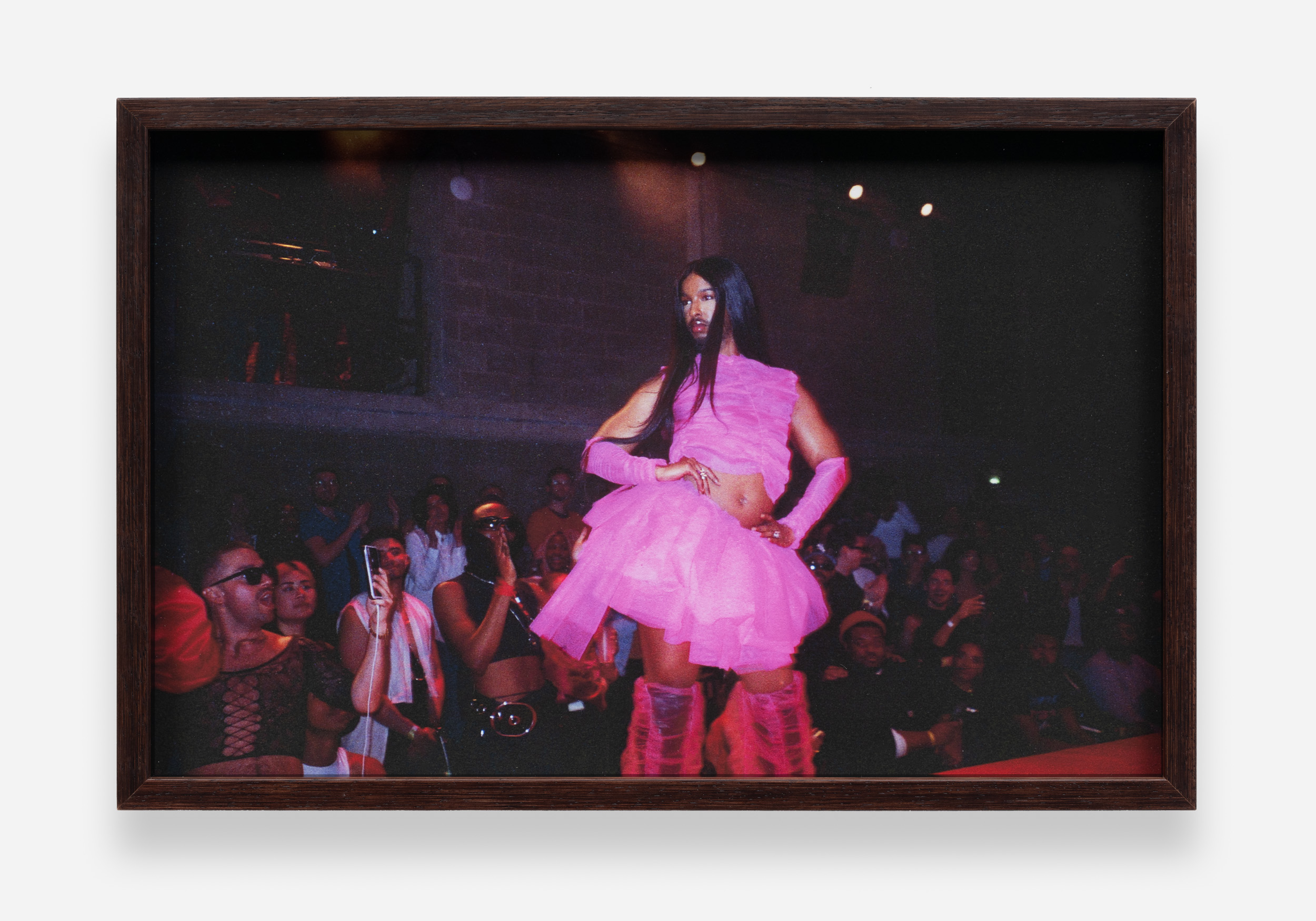
Sandwiched between two of Ivie Bartlett’s photographs is a work from Peter Hujar. Hujar’s photographs depict a full spectrum of queer experiences, from erotic pictures of male masturbation to the agonisingly beautiful photos of Candy Darling on her deathbed in 1973. There is an uncompromising tenderness that marks his work. Saints & Sinners showcases his photograph Gay Liberation Front Poster Image (1970). The Gay Liberation Front used this same image to recruit members of the LGBTQIA+ community to join the first-ever gay pride march. Next to Bartlett’s work, Hujar’s photographs remind us of how enmeshed queer lives are in acts of protest, constantly at risk of losing the people, spaces and resources that allow them to survive.
Another major photographer features in the show- Catherine Opie. Opie has always gone to great and sometimes painful lengths to ensure that people know she is not separate from the individuals she photographs. She famously once carved the word “pervert” into her chest, an open wound pictured in her iconic photograph Self Portrait/ Pervert, 1994. Her work documents subculture to preserve it in all of its glory, making no attempt to make it palatable to the masses.

The show also includes the bleak surrealist paintings of Mexican artist Sergio Miguel. Miguel’s portrait of a boy alone on a beach at night has a nightmarish quality; behind the boy, waves crash on the shore, and next to him, a serpent is inching closer. Perhaps the most unnerving quality is the expression on the boy’s face, who is either paralysed by fear or in total control of the scene. Likewise, Elsa Rouy’s contribution to the show is an unknowable representation of the artist’s internal landscape. Painted in flesh tones and oozing with bodily fluids, Rouy’s paintings are gory and despairing. Neither artist presents a sanitised depiction of LGBTQIA+ existence. Instead, they dare the audience to look and then refuse to let them look away.

Meanwhile, Doron Langberg’s blush-inducing portrayals of sexual intimacy are wholly tender. In his paintings, figures merge into one another, their activities given a veil of privacy and a pulsing sense of warmth thanks to Langberg’s liberally applied brush strokes.
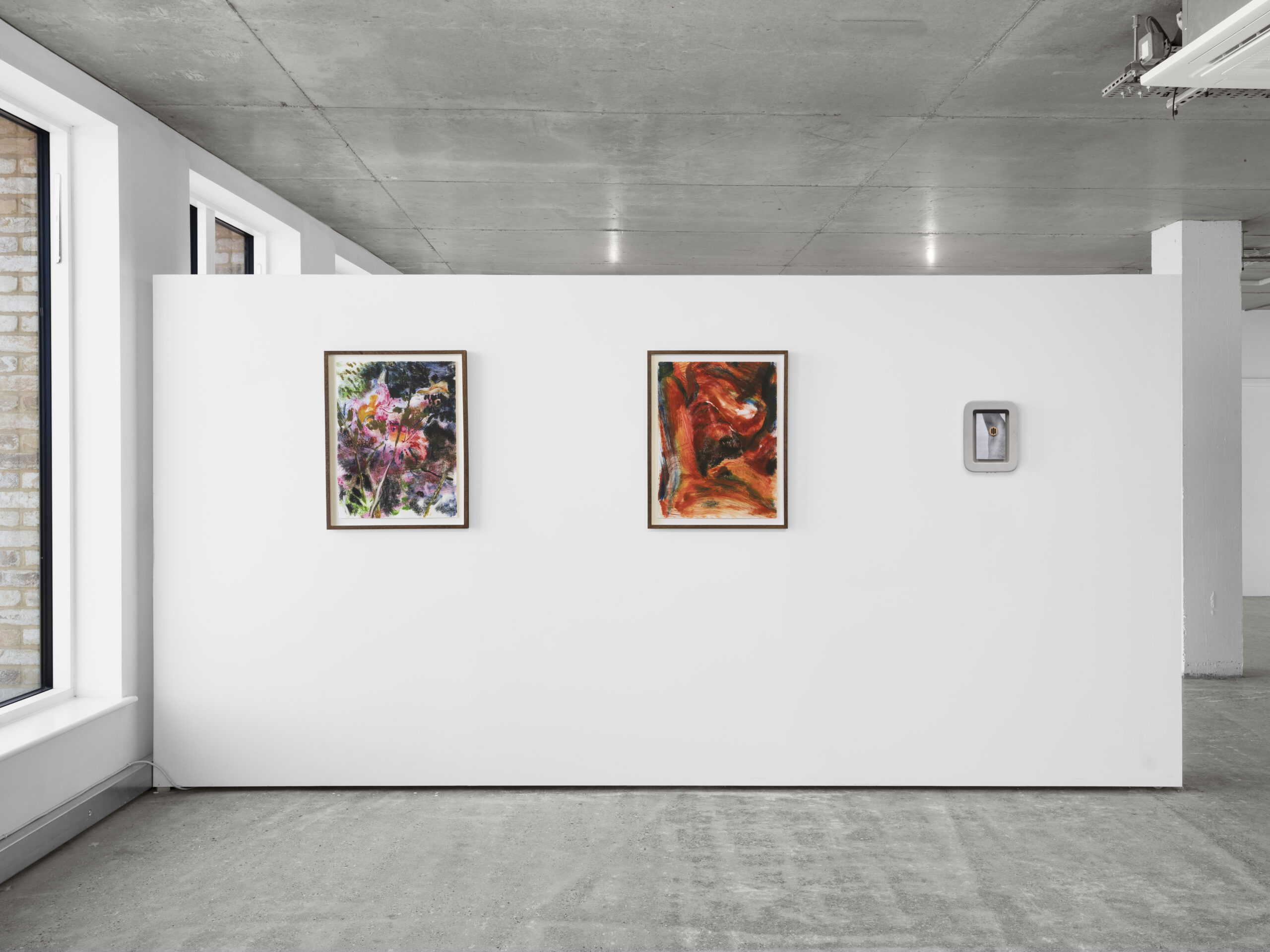
Likewise, Samantha Nye depicts queer intimacy, but her works are laden with a sense of blase humour. In her paintings, Nye envisions a space where women are allowed to age (without shame), hang from the ceiling, have sex on the floor and piss in the pool. All of this is welcome in Nye’s dysfunctional utopia.

Nye’s paintings are reminiscent of the surreal worlds that Hillary Harkness conjures up. Although, unlike Nye’s work, Harkness portrays a world populated by women as one which is violent, militant and vaguely disturbing, where miniaturised figures of women engage in various violent, erotic and sadomasochistic activities. One of Harkness’s lithographs, Big Chicken Dinner, is included in the show.
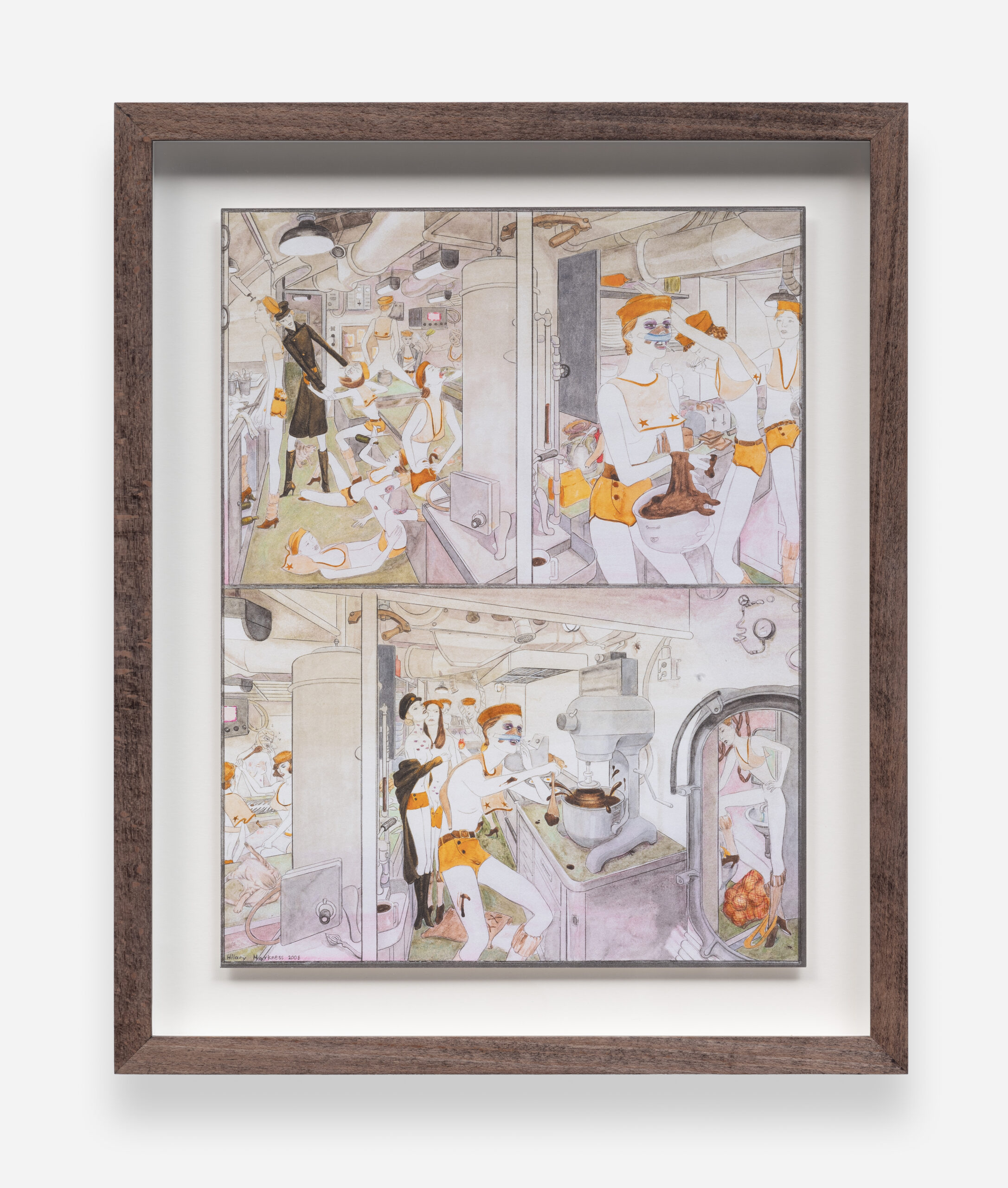
Two artists, Shadi Al Atallah and Jakob Rowlinson, explore the connection between queer culture and tradition. Atallah explores connections between the queer ballroom scene and folkloric dance traditions from African diasporic communities in the Arabian Peninsula, whilst Rowlinson questions the role of masculinity through mediaeval symbolism and haunting reconstructions of the “Green Man” (a sculptural figure commonly found in Norfolk churches).
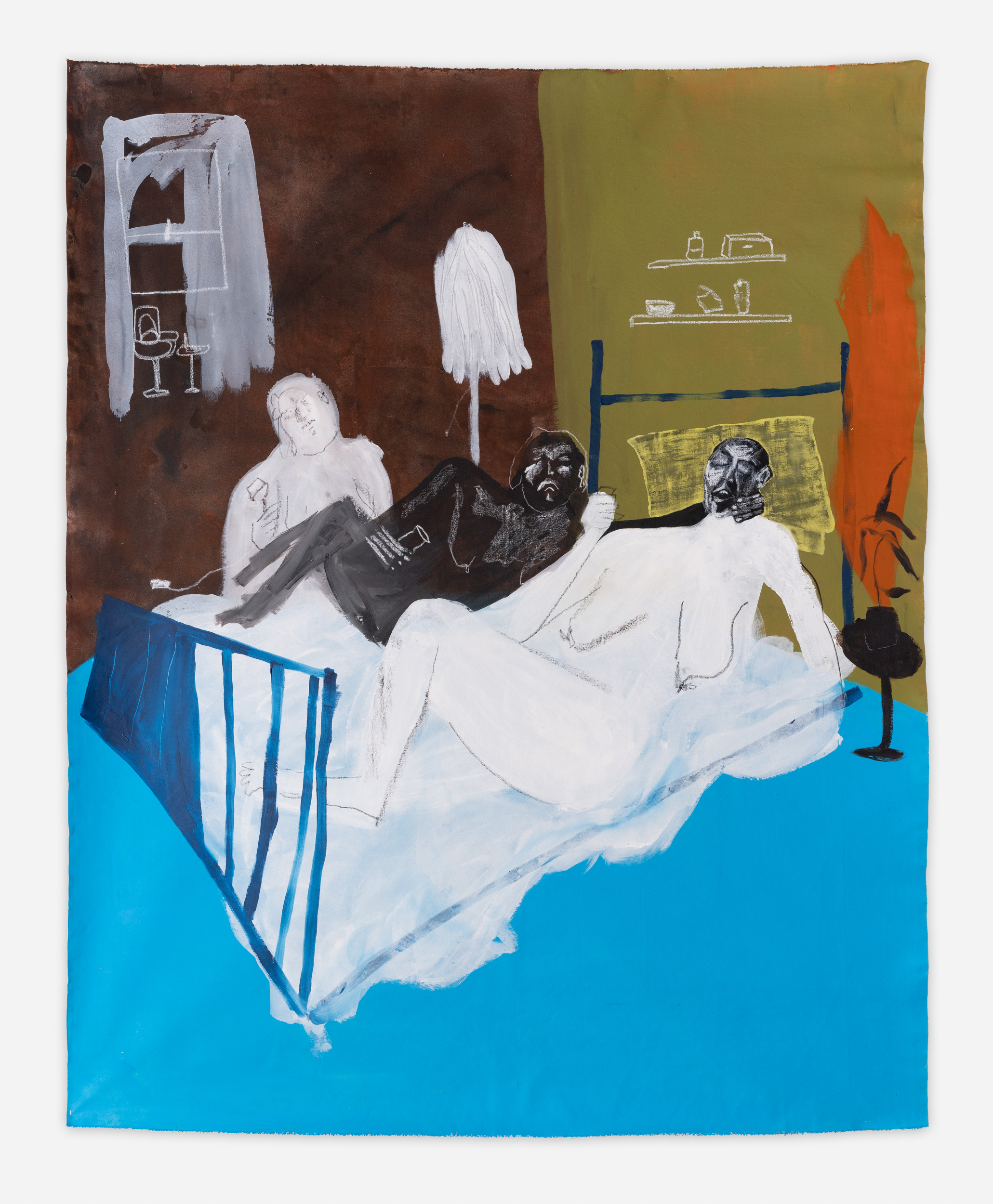
In another vision of how culture affects identity, Juan Arango Palacios’s paintings explore the effects of migration and marginalisation, referencing his lived experience travelling between various homophobic states in America. Ara Tucker’s work confronts the impacts of race and trauma on daily life. Meanwhile, Lío Mehiel and Wynne Neilly explore bodily autonomy as it relates to environmental collapse. In Angels of a Drowning World, Lío Mehiel is submerged, naked, in the Salton Sea, a toxic lake in California. Similarly, Rafał Zajko deals with issues of the industrial past and explores how its environmental impact continues to affect queer and working-class lives today.
Multifaceted and complex, Saints & Sinners is a rallying call to arms and an emphatic celebration of the LGBTQIA+ community where no conditions apply.
Words by Emily Burke
*Saints & Sinners is on view at GUTS Gallery until the 7th of July, 2023.
Saints and Sinners
9 June – 7 July, 2023
Guts Gallery
Unit 2, Sidings House
10 Andre Street
London E8 2AA
